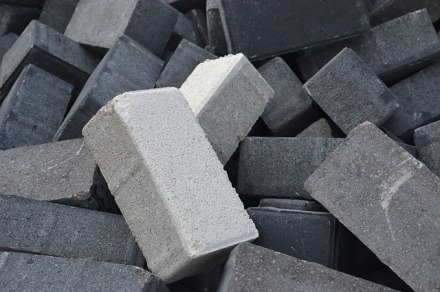Stock: DG Khan (ticker DGKC; Pakistan Stock)
DG Khan Cement delivers consistent growth amid turbulent times

There is no doubt that investors have taken Pakistan’s stock market to bear market beginning August amid political concerns, but it is always better to seek out good opportunities during these hard times.
One opportunity observed is one of the country’s $1.07 billion cement manufacturer, DG Khan Cement Company.
Valuations
The 39-year-old company trades at 0.9 PB ratio along with an 8.5 PE multiple and an attractive 3.9% dividend yield.
Average fiscal year estimates indicated forward sales and earnings multiples of 2.2 times and 7.67 times.
Total returns
DG Khan has provided nearly 30% total losses for its shareholders this year while the broader Pakistan ETF (ticker PAK) gave 18.2% total losses.
DG Khan Cement
D. G. Khan Cement Company Limited is a Pakistan-based cement manufacturing company. The Company is engaged in the production and sale of clinker, ordinary portland and sulfate resistant cement.
DG generates its revenues in Pakistan only and the Company’s segments include Cement, Paper and Dairy.
Pakistan Cement Industry witnessed an overall growth of 7% while DG’s revenue and profits rose by 6.2% and 1.2%, respectively, as of its recent nine months operations, having had 28.5% profit margin compared to 30% a year earlier.
Cement
The Cement segment is engaged in the production and sale of clinker, Ordinary Portland and Sulfate Resistant cement.
In its recent nine months of operations, Cement revenue increased 6% year over year to 22.63 billion PKR (89% of total unadjusted sales) and registered profit margins of 29% compared to 30% a year earlier.
Paper
The Paper segment manufactures and supplies paper products and packing material.
Revenue in the paper business grew 17% year over year to 1.84 billion PKR (7% of total unadjusted sales) and profit margins of 15% vs. 12% a year earlier.
Dairy
The Dairy segment is engaged in the production and sale of raw milk.
Dairy sales fell 9% year over year to 826.7 million PKR (3% of unadjusted sales) and losses of 279 million PKR compared to 475.4 million PKR a year earlier
Sales and profits
In the past three years, DG registered 5.78% revenue growth average, 95.5% profit growth average, and 23.4% margin average.
Cash, debt and book value
As of March (recent available filing), DG had 715 million PKR (Pakistani Rupee) in cash and cash equivalents and 19.2 billion PKR in debt with debt-equity ratio 0.26 times compared to 0.11 times a year earlier. Overall debt increased by 12.6 billion PKR while equity increased 11.1 billion in the same time period.
DG had no goodwill or intangibles in its 104.9 billion PKR assets while book value rose by 18.1% year over year to 72.7 billion PKR.
Cash flow
In its nine months operations that ended in March, DG had 2.25 billion PKR in cash flow from operations compared to 7.88 billion PKR in the same period last year. The company had more cash outflow in relation to its prepaid expenses resulting in lower cash flow in the recent period.
Capital expenditures were 18.96 billion PKR negative 16.7 billion in free cash outflow for the period. In addition, DG raised 6.78 billion in debt issuance (net repayments) and provided 18 million PKR in dividends to shareholders.
The cash flow summary
In the past three years, DG allocated 8.75 billion in capital expenditures, reduced its overall debt by 5.36 billion (net any issuances and other financing activities), provided 3.5 billion PKR or 21.1% of its free cash flow in dividends.
Conclusion
Other than its money losing dairy business (3% of unadjusted sales), DG has impressively exhibited steady strong growth in all of its businesses. The company also had a solid growing balance sheet missing any goodwill or intangible elements.
DG also has maintained conservative dividend shareholder payouts in recent years.
Using historical multiples and revenue growth average figures with a 10% margin indicated a per share figure of 156.13 PKR compared to 155.83 PKR at the time of writing.
In summary, DG is a hold.
Disclosure: I do not have shares in any of the companies mentioned.


